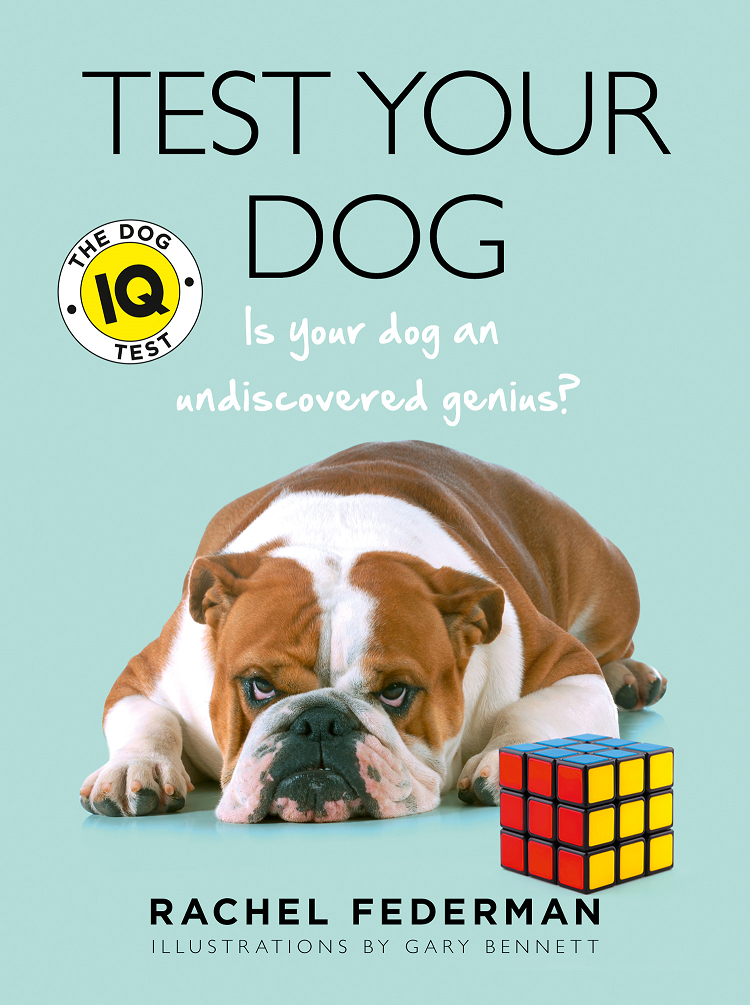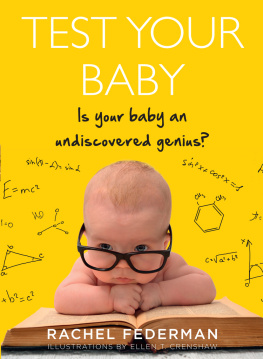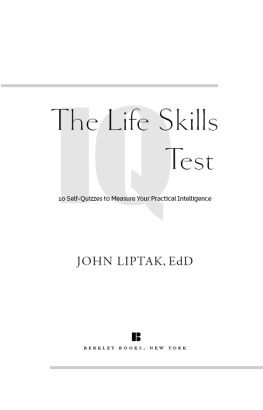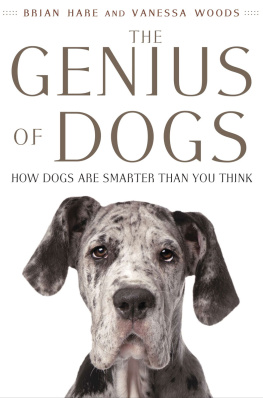
I used to look at [my dog] Smokey and think, If you were a little smarter you could tell me what you were thinking, and hed look at me like he was saying, If you were a little smarter, I wouldnt have to.
Fred Jungclaus
Thanks to Jeannine Dillon and Erica Heisman, my lovely editors; Gary Bennett for bringing the text to life with his charming illustrations; all the dog owners who graciously gave their time to take the test in the beta stage; and Bear, Bella, Biskit, Bronx, Brutus, Casey, Chloe, Cody Nick, Crumpet, Echo, Jenny, Jonas, Lady, Mac, Maddy, Max, Mimi, Nay Nay, Olive, Pal, Patti Smith, Petit, Porter, Raster, Remi, Rugby, Sequoyah, Skye, Spencer, Teca, Tippy, Tyler, and Uncle Sam, and all the other wonderful sheep in wolves clothing who make or made every day better, asking so little in return.
In loving memory of Casey who would have surely aced the dog IQ test.

By the time babies are one year old, the act of sitting is unlikely to be met with much fanfare. As guests were told to have a seat, in church to be seated, as stragglers at the movies to get down in front. Otherwise, wed be reluctant to sit on command, even if someone was waving a giant piece of cheesecake in the air.
Dogs can sit much earlier than we can, yet a dog that will sit on command outside and in the company of other energetic dogs is a wonder to be marvelled at. A well-trained dog is seen as a smart dog, and therein lies the essential difficulty of determining a dogs IQ.
And because the only use dogs have for a pencil is as a barely adequate chew toy, its hard for us to get a clear picture of what goes on inside their furry heads.
Its especially tricky to compare one dog to another because the differences between breeds are great. The difference between a mastiff and a Chihuahua, for example, may be greater than the difference between your dim-witted brother-in-law and Koko, the talking gorilla. Think of the surprise and disappointment of a family who hoped a golden retriever would serve as a watchdog, or the disaster of thinking a Bijon Frise would help on a hunt. Dogs, though they share many traits with their wild ancestors, have been bred by humans to act in particular ways and many now barely resemble each other, in personality or appearance.
So a single test cant fully assess the variance across different breeds, while taking into account early life and training. An obedient dog brought up in the Police Academy is not necessarily inherently smarter than a wild dog who grew up on a council estate.
The question this test addresses then is not Does my dog have the capacity to understand complex numbers? but rather Can my dog function effectively in our world? Aeons ago, a lazy couch potato dog perfect for life in an apartment today would have been the weakest member of the pack, just as todays brilliant physicist might have been a huge liability for hunter-gatherers in the Stone Age. For any species, an intelligence test is context dependent. Todays standardized intelligence tests for humans are attacked for ignoring that fact.
Intelligence in dogs can be categorized into four basic areas: communication skills, social behavior, perceptual/motor skills, and memory and association. The higher order functions of judgment and resilience also factor into our understanding of canine aptitude.
In designing this test, Ive relied on Robert J. Sternbergs Triarchic Theory of (Human) Intelligence which has been broadly applied to studies of canine IQ. Following Sternberg, I define intelligence as ones ability to achieve a desired goal in ones environment. After all, a border collie thats a genius on a Scottish farm has a thing or two to learn before he will impress the poodles in the cafes along the Champs-Elyses.
This test is not a rigorous intelligence standard compiled by a group of scientists huddled around their panting subjects and a massive pile of treats. Its merely a fun gauge for adoring dog owners to see how adaptable, understanding, and yes, intelligent their best friends really are.
Like a modern day Lassie, will your dog dial 999 if you fall and cant get up? Will he bark until help arrives? Will he lie down next to you? Or will he circle around his leash, hoping for a walk?
Fortunately, dogs make our task a bit easier than pets of the feline variety because theyre so eager to please us. Once they understand what were asking, theyll jump through hoops for an atta boy, which, when you stop to think about it, isnt that much different than humans, depending on who is handing out the praise.
Most importantly, your dog needs a patient owner willing to take the time to show him the ropes of domestic life. Otherwise youll likely have a shredded sofa, peevish neighbours, and trouble getting valid results on this test.
THE DOG IQ TEST

Day to Day with Your Dog
Part 1 The Frequency Exam
Instructions
This first part of the test is based on observations you can make without consulting your dog. There are 15 questions in this section. Decide which level of frequency best describes your pets behaviour by using the following scale:
Always
Sometimes
Never
When youve finished this exam, refer to page 103 for the Rating Scale and mark each page with the number of points your dog earned for that question.
Does your dog recognize the signs that indicate you are preparing his or her food?
Points Received
____________

Does your dog have different reactions to different foods (e.g. is especially eager for a piece of salami vs. the same old dry food)?
Points Received
____________


















